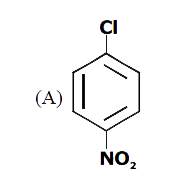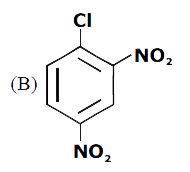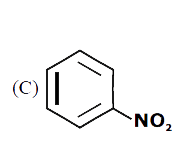Which of the following is most reactive towards H2 ?
To determine which of the given substances is most reactive towards hydrogen gas (H₂), we need to analyze the halogens provided: Cl₂ (chlorine), F₂ (fluorine), Br₂ (bromine), and I₂ (iodine).
1. Identify the Reactivity of Halogens:
The reactivity of halogens decreases as you move down the group in the periodic table. This means that fluorine (F₂) is the most reactive, followed by chlorine (Cl₂), bromine (Br₂), and iodine (I₂).
2. Consider the Reaction with Hydrogen:
All halogens can react with hydrogen to form hydrogen halides (HX). The general reaction can be represented as:
X2+H2→2HX
where X is a halogen (Cl, F, Br, I).
3. Evaluate Each Halogen's Reaction with H₂:
- F₂ + H₂: This reaction is highly exothermic and very vigorous.
- Cl₂ + H₂: This reaction is also exothermic but less vigorous than fluorine.
- Br₂ + H₂: This reaction occurs but is less exothermic than chlorine.
- I₂ + H₂: This reaction is the least vigorous and may require higher temperatures to proceed.
4. Determine the Most Reactive Halogen:
Based on the reactivity trend and the nature of the reactions with hydrogen, we can conclude that:
- Fluorine (F₂) is the most reactive towards hydrogen gas (H₂) among the given options.
Conclusion:
The most reactive substance towards H₂ is F₂ (fluorine).
The reactivity of halogens decreases as you move down the group in the periodic table. This means that fluorine (F₂) is the most reactive, followed by chlorine (Cl₂), bromine (Br₂), and iodine (I₂).
All halogens can react with hydrogen to form hydrogen halides (HX). The general reaction can be represented as:
X2+H2→2HX
where X is a halogen (Cl, F, Br, I).
- F₂ + H₂: This reaction is highly exothermic and very vigorous.
- Cl₂ + H₂: This reaction is also exothermic but less vigorous than fluorine.
- Br₂ + H₂: This reaction occurs but is less exothermic than chlorine.
- I₂ + H₂: This reaction is the least vigorous and may require higher temperatures to proceed.
Based on the reactivity trend and the nature of the reactions with hydrogen, we can conclude that:
- Fluorine (F₂) is the most reactive towards hydrogen gas (H₂) among the given options.
The most reactive substance towards H₂ is F₂ (fluorine).
Topper's Solved these Questions
- HYDROGENBOOK - MODERN PUBLICATIONCHAPTER - HYDROGENEXERCISE - Competition file (Objective Questions) (Multiple Choice Questions from Competitive Examinations)
41 Videos
- HYDROGENBOOK - MODERN PUBLICATIONCHAPTER - HYDROGENEXERCISE - Competition file (Objective Questions) (Multiple Choice Questions with more than one correct answer)
4 Videos
- HYDROGENBOOK - MODERN PUBLICATIONCHAPTER - HYDROGENEXERCISE - Higher Order Thinking Skills (Advanced Level)
24 Videos
- HYDROCARBONSBOOK - MODERN PUBLICATIONCHAPTER - HYDROCARBONSEXERCISE - UNIT PRACTICE TEST
15 Videos
- MOCK TEST -1BOOK - MODERN PUBLICATIONCHAPTER - MOCK TEST -1EXERCISE - SECTION -D
2 Videos
Similar Questions
Knowledge Check
Which of the following is most reactive toward SNAr :
A B
B C
C D
D
Which of the following is most reactive toward SNAr?
A B
B C
C D
D
Which of the following is most reactive toward SNAr?
A B
B C
C D
D
Which of the following is most reactive towards aqueous NaOH?
View SolutionWhich of the following is most reactive towards aqueous HBr?
View SolutionWhich of the following is most reactive towards aqueous HBr?
View SolutionWhich of the following is the most reactive towards SN1 ?
View SolutionWhich of the foollowing is most reactive toward SN2 reaction ?
View Solution
